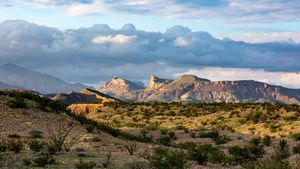A powerful earthquake struck off the far eastern coast of Russia, triggering dramatic geological events including the eruption of the Shiveluch volcano. The quake, recorded at 7.0 on the Richter scale, occurred near Petropavlovsk-Kamchatsky, a city housing about 180,000 residents.
The earthquake hit at approximately 55 miles from Petropavlovsk-Kamchatsky and at a depth of around 30 miles, according to the US Geological Survey (USGS). Initial assessments revealed no immediate reports of injuries or significant damage, raising hopes among local residents.
Despite the initial earthquake warnings, the Russian Emergencies Ministry did not issue any tsunami alerts, though the US Tsunami Warning System had cautioned about possible hazardous waves within 186 miles of the epicenter. The event still prompted significant concern due to its potential impact on coastal communities.
Reports indicated the Shiveluch volcano expelled ash plumes soaring as high as 8 kilometers (5 miles) due to the seismic activity. Local news sources noted the eruption was accompanied by lava flows, creating an awe-inspiring but potentially dangerous sight.
According to TASS, Russia’s state news agency, no casualties have been reported at the moment. Authorities are conducting inspections on various buildings and social facilities to assess any hidden structural damages.
While the earthquake was strong, reports from the Ministry of Emergency Situations indicated no “major damage” had been observed. This reassurance likely provided some peace of mind to residents as recovery efforts began.
Emergency protocols were swiftly enacted, with officials urging residents to remain cautious and prepared for aftershocks following the quake. Petropavlovsk-Kamchatsky has also experienced volcanic eruptions regularly due to its location on the Pacific Ring of Fire.
Observing the dynamic interactions between the earthquake and volcanic activity has intrigued scientists. They remain focused on closely monitoring seismic patterns to better understand the region's seismic behavior.
This event serves as yet another reminder of this volatile region’s geological nature, experiencing frequent seismic and volcanic activity. The Kamchatka Peninsula is famous for its array of volcanoes, many of which are still active.
Local residents and visitors alike shared their reactions through social media, showcasing dramatic footage of the erupting volcano. These visuals revealed both the power of nature and the calm of the city as citizens awaited updates from officials.
The government urged caution, advising residents to stay indoors during the ash fallout. The ash from volcanic eruptions can pose health risks, particularly for those with respiratory issues.
Local newspapers reported on the quick response from emergency services, who have been deployed to affected areas to provide support and assess damage. Community organizations also coordinated to assist residents affected by the eruption.
With both earthquake and volcanic activity, the region's geological tensions can resonate far and wide. Understanding these forces is critical for disaster preparedness and response in such active areas.
Experts are examining how these events interplay, with many researchers interested in the relationship between earthquakes and volcanic eruptions. Learning from this incident may provide valuable data for future monitoring and mitigation strategies.
The disaster management practices executed during this event will likely be evaluated to improve coordination efforts for any similar future occurrences. Local authorities will review their response to fine-tune their methodologies for upcoming emergencies.
Residents are expressing immense gratitude for the lack of reported injuries, emphasizing the importance of community support during such crises. Volunteers have stepped forward to aid relief efforts, emphasizing the spirit of solidarity amid challenges.
Residents have begun to return to their routines, but attentiveness remains high as aftershocks and potential volcanic activity continue to loom. The government has installed monitoring systems to keep citizens updated on any developments.
Overall, this recent earthquake and volcanic eruption highlight the unpredictable yet beautiful nature of Kamchatka’s geography. The resilience of its communities amid such natural milestones reiterates the need for ever-vigilant disaster preparedness.
Petropavlovsk-Kamchatsky is no stranger to nature’s fury, having experienced various seismic events over the years. This event serves as both concern and fascination for geologists and the locals alike.
Several aftershocks have already occurred, with many residents remaining on high alert. The disaster painted Kamchatka’s dark skyline with ash clouds, drawing attention from the science community worldwide.
Volcanic ash can travel vast distances, forcing nearby communities to adapt to changing conditions. With this incident, educators and scientists both advocate for more outreach on volcano-awareness education.
Looking forward, residents hope for stability and strength within their community as recovery efforts progress. Tracking the geological features of Kamchatka continuously remains critical for future developments.
While the ash and lava flows create visually captivating scenes, they also remind everyone of nature’s immense power. This situation acts as another chapter of the compelling story of Earth’s natural occurrences.
Indeed, these occurrences remind us of the unpredictable power of nature, marking historical moments across the landscapes and its communities. The images captured today will become part of the rich narrative of Kamchatka’s geological identity.



